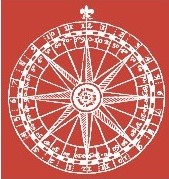Michelangelo Reading Landino? The "Devil" in Michelangelo's Last Judgment
In lieu of Satan, the Hell scene in Michelangelo's Last Judgment features Charon and Minos, two key figures present in Dante’s Inferno. These figures were given an interesting psychological interpretation in the well circulated fifteenth-century…
Listée dans Article | publication par groupe Iter Community
Version 1.0 - publiée le 26 Aug 2025
Sous licence Creative Commons BY-NC 4.0
Description
In lieu of Satan, the Hell scene in Michelangelo’s Last Judgment features Charon and Minos, two key figures present in Dante’s Inferno. These figures were given an interesting psychological interpretation in the well circulated fifteenth-century commentary on Dante’s Commedia by Cristoforo Landino. This article compares Landino’s allegoresis of the two figures and a selection of Michelangelo’s poetry, as well as the artist’s drawings for and relationship to the young nobleman Tommaso de’ Cavalieri, to suggest the hypothesis that Michelangelo’s Minos and Charon were intended to symbolize the psychological experience of damnation and, more specifically, the dynamic interplay of conscience, free will, choice and volition.
Citer ce travail
Les chercheurs doivent citer ce travail comme suit :
Tags
Notes
Original publication: Rolfe, Sarah Melanie. "Michelangelo Reading Landino? The "Devil" in Michelangelo's Last Judgment." Quaderni d'italianistica 30 (2): 2010. 19-38. DOI: 10.33137/q.i..v30i2.11901. This material has been re-published in an unmodified form on the Canadian HSS Commons with the permission of Iter Canada / Quaderni d'italianistica. Copyright © the author(s). Their work is distributed by Quaderni d'italianistica under a Creative Commons Attribution-NonCommercial 4.0 International License. For details, see https://creativecommons.org/licenses/.
Aperçu de la publication
Iter Community
This publication belongs to the Iter Community group.
When watching a publication, you will be notified when a new version is released.
